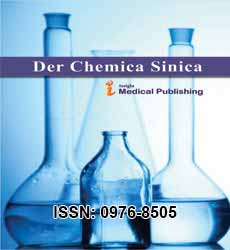ISSN : 0976-8505
Der Chemica Sinica
Basics of Food Chemistry
Vivekavardhini College, Kothagudem, Telangana, India
- *Corresponding Author:
- Sudha M
MSc Organic Chemistry
Vivekavardhini College
Kothagudem, Telangana, India
E-mail: sudhamantri29@gmail.com
Received Date: April 02, 2020; Accepted Date: April 27, 2020; Published Date: April 30, 2020
Citation: Sudha M (2020) Basics of Food Chemistry. Der Chem Sin Vol.11, No.2: 4. DOI: 10.36648/0976-8505.11.2.4
Copyright: © 2020 Sudha M. This is an open-access article distributed under the terms of the Creative Commons Attribution License; which permits unrestricted use; distribution; and reproduction in any medium; provided the original author and source are credited.
Abstract
Food chemistry, a branch of applied chemistry, deals with the chemical examination and analysis of food and food components, interactions of all biological and nonbiological components of foods.The main aim of food chemistry is the control and the guarantee of a high and nutritious quality of food, to which the consumer as the legislature imposes high quality requirements. The scientific approach to food and nutrition arose with attention to agricultural chemistry in the works of J. G. Wallerius, Humphry Davy, and others.
Keywords
Food; Water; Nutrition
Introduction
Food Chemistry, the name defines the deals with biochemical nature of the food. It also involves the study of chemical components such as proteins and carbohydrates and more. In all come across different processing techniques and their effect on certain type of food and also for ways to enhance the quality of food [1].
Examples of food chemistry: Fermentation of dairy products (An example of enhancing a process would be to encourage fermentation of dairy productswith microorganisms that convert lactose to lactic acid), fat & sugar substitutes.
Water is the major component of food which helps in digestion but it also provides spacefor bacterial growth which leads to food spoilage. Thus measuring the amount of water in a food item can be used to measure the shell life of an object.
Food is composed of 50% of proteins in its dry weight. Proteins are very complex macromolecules. They play a vital role in the structure and function of cells. Consisting mainly of carbon, nitrogen, hydrogen, oxygen and some sulphur and small amounts of copper, iron, zinc or phosphorous.
In food, proteins are essential for growth and survival, and requirements vary depending upon a person's age and physiology (e.g., pregnancy). Protein is commonly obtained from animal sources: eggs, milk, and meat. Nuts, grains and legumes provide vegetable sources of protein, and protein combining of vegetable sources is used to achieve complete protein nutritional quotas from vegetables.
Conclusion
Understanding food chemistry helps us develop proper ways of handling food and also develop good manufacturing practices.
References

Open Access Journals
- Aquaculture & Veterinary Science
- Chemistry & Chemical Sciences
- Clinical Sciences
- Engineering
- General Science
- Genetics & Molecular Biology
- Health Care & Nursing
- Immunology & Microbiology
- Materials Science
- Mathematics & Physics
- Medical Sciences
- Neurology & Psychiatry
- Oncology & Cancer Science
- Pharmaceutical Sciences
